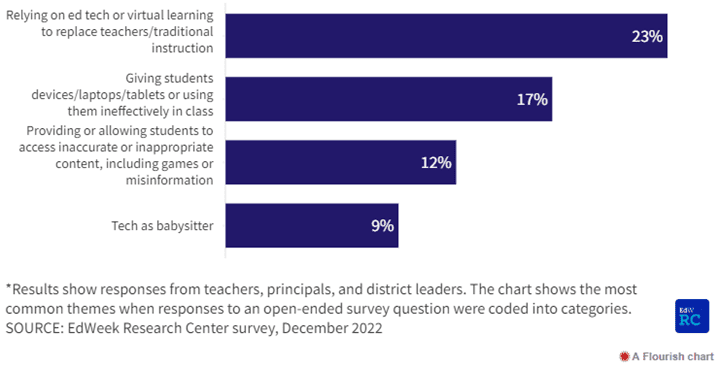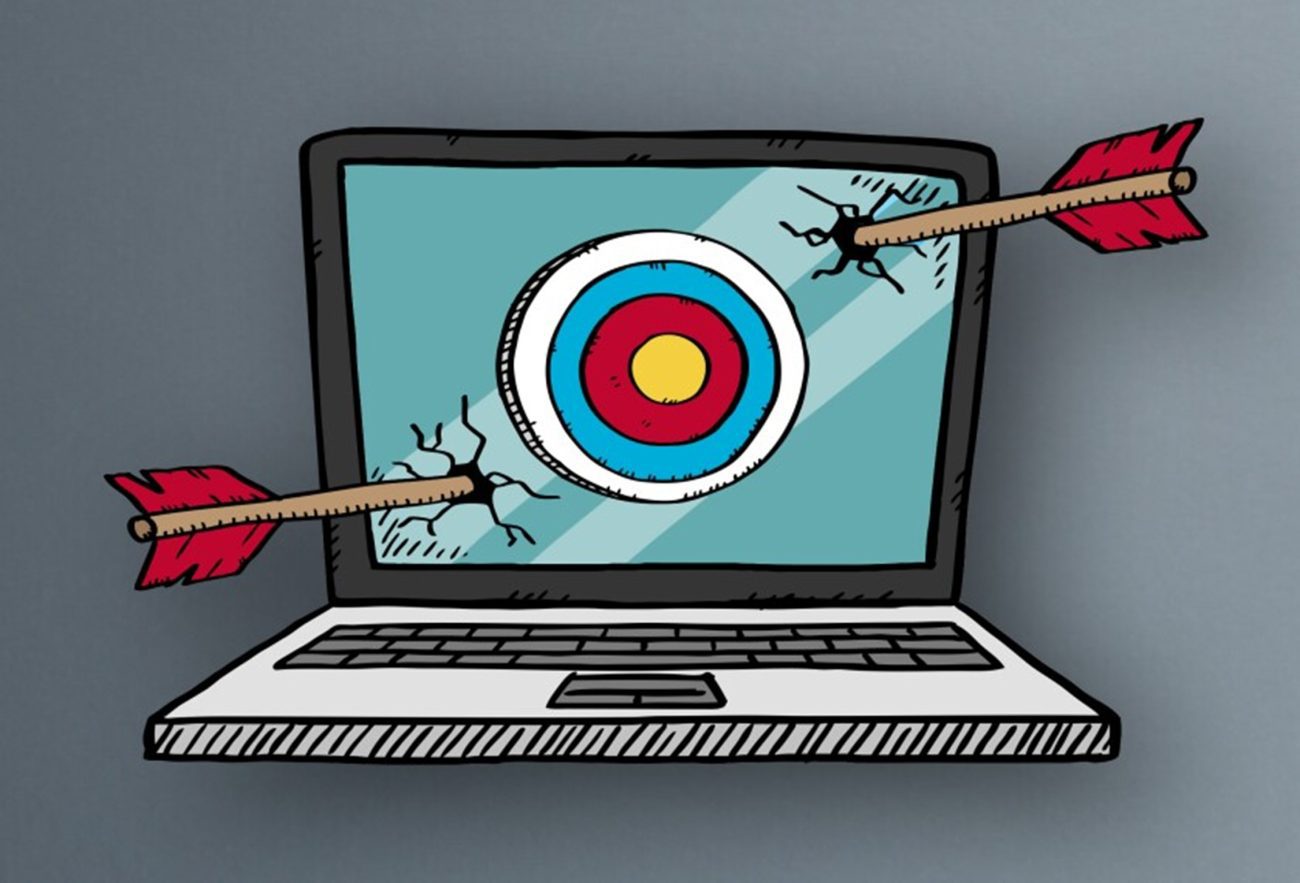Misguided Use of Ed Tech Is a Big Problem. How Schools Can Help Prevent It
Education Week | By Elizabeth Heubeck | March 27, 2023
The nation’s K-12 education sector is heavily invested in educational technology. In 2020 alone, it spent $35.8 billion on technology, mainly to power the massive shift to online learning required during the height of the pandemic, according to data from the Learning Counsel, a research institute.
Although the return to in-person learning did prompt declines in the use of some tools such as Zoom, school use of technology when most students and educators were back in classrooms remained significantly higher than it had been prior to the pandemic, according to EdWeek Research Center survey data. That was, in large part, because of the expansion of 1-to-1 computing programs when students were learning in full-time remote or hybrid instruction.
Despite the heavy financial investment and higher usage of technology in the nation’s K-12 schools, educators are not uniformly satisfied with it.
To find out how K-12 educators feel about the use of technology for teaching and learning, the EdWeek Research Center in December 2022 polled a nationally representative sample of teachers, principals, and district leaders. The survey asked educators: “What is the worst or most misguided use of educational technology you have experienced during your career in K-12 education?”
The most common responses were illuminating, given what schools had been through over the past few years. Topping the list was reliance on ed tech or virtual learning to replace teachers/traditional instruction. That was clearly a response to all the remote or hybrid instruction during the big stretch of the pandemic. (See chart below for the other most common responses.)
What is the worst or most misguided use of educational technology you have experienced during your career in K-12 education?

The most common responses inevitably point to a big-picture problem with the use of educational technology: It is now far more accepted than ever before, but its use is often inappropriate and/or ineffective.
In some ways over the past few years, educators have adjusted their perspectives about technology. For example, in a nationally representative survey of teachers and district leaders in spring 2020, the EdWeek Research Center sought educators’ opinions on 1-to-1 computing programs (one device per student, provided by schools). An overwhelming 73 percent of survey respondents agreed with this statement posed by the survey: “When schools reopen, students’ increased levels of access to 1-to-1 computing will make high-quality teaching and learning easier.”
Even so, there are plenty of critics of 1-to-1 computing these days. For instance, in the open-ended question in the EdWeek Research Center survey about the most misguided uses of technology, nearly 1 of every 5 educators cited giving students devices or using them ineffectively.
That frustration could be influenced by the lack of alignment many ed-tech tools have with schools’ top priorities. For example, only about a quarter of the 100 most-used ed-tech tools in classrooms meet Every Student Succeeds Act requirements, according to a new report from LearnPlatform, an education technology company that helps districts measure the use and effectiveness of their digital products.
Of course, the reality is that educational technology is now baked into K-12 teaching and learning, despite educators’ frustrations with it. But bad and misguided uses of it should be addressed head-on.
- Appoint an administrator who can assess the educational value of ed-tech tools, not just someone who knows how the technology works.
- Develop a strategic plan for ed-tech usage within a school district (as opposed to “one-off” purchases) that emphasizes its top teaching and learning priorities.
- Consider whether the educational technology will facilitate students actively engaging in learning and create instructional opportunities that would not exist without the technology.
- Clarify expectations for the use of ed tech when introducing it to students, including clear guidance on what is considered inappropriate use of the technology.
- Include focused professional development as part of adopting new tech products or services, including ongoing support and training.
SOURCES: Annamaria Schrimpf, president, Massachusetts Educational Technology Administrators Association; and Education Week reporting
Ed-tech experts outline advice for how to make digital learning work better
Education Week turned to two ed-tech experts for input on how schools can avoid inappropriate and/or ineffective use of technology for teaching and learning. Here is what they had to say:
Annamaria Schrimpf has held positions related to ed tech for over a quarter century. Currently, she serves as the president of the Massachusetts Educational Technology Administrators Association and the director of educational technology and digital learning at the Shawsheen Valley Career and Technical Regional school district.
When asked about how schools should implement technology thoughtfully into K-12 learning, Schrimpf said it is vital to have someone in a leadership position who is an educator first and a skilled technologist second. That way, they always put teaching and learning first but also understand how technology can help. “It’s really about leadership,” she said. “Having a key administrator who can guide conversations [about the use of ed tech] forward is imperative.”
While it’s essential to hire a chief technology officer who knows how to maintain technology and troubleshoot related technical problems, that same leader may not have the educator skills or experience to assess the effectiveness of specific ed-tech platforms. School districts need to identify the person who can operate comfortably in both worlds—in some cases, that can be the chief academic officer or a curriculum director.
Christine Elgersma, the senior editor of learning content strategy for Common Sense Media, a nonprofit that evaluates the effectiveness of educational technologies, stresses the importance of using ed tech intentionally. “There are definitely websites and [ed-tech] games that are getting misused as ways to keep kids occupied,” she said. (One of the most misguided uses of tech cited in the EdWeek Research Center survey was using technology as a “babysitter.”)
Elgersma recommends that educators ask specific questions before purchasing or adopting ed tech, such as:
- Why are we using technology at this moment and for this purpose?
- Is it engaging higher-order thinking skills or allowing for greater participation?
- What will a child get out of this experience?
- Was this technology developed with kids’ learning in mind?






